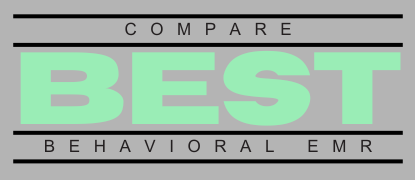Choosing a behavioral health EMR is a critical decision for practice owners and clinicians. Not only does the right EMR software streamline your documentation, billing, and patient management processes, but its security features also directly impact the safety and confidentiality of patient data. With rising concerns about cybersecurity threats and stringent compliance requirements, you must carefully evaluate EMR security features before making your selection. This guide will simplify the evaluation process, helping you confidently choose software that protects your practice and your patients.
Why EMR Security Matters for Behavioral Health Practices
Behavioral health practices manage highly sensitive patient information. The nature of mental health diagnoses, therapy notes, and personal histories requires robust protection measures. EMR security features not only protect your patients but also ensure compliance with regulations like HIPAA and the HITECH Act. A data breach could severely damage your practice’s reputation and lead to costly fines and legal consequences (learn more about HIPAA security requirements here).
Step-by-Step Guide to Evaluating EMR Security Features
Step 1: Check for HIPAA Compliance and Certifications
The first indication of robust EMR security features is HIPAA compliance. Look for clear and explicit assurances from EMR providers that they meet or exceed HIPAA privacy and security regulations. Additionally, certifications such as SOC 2 Type II compliance demonstrate that the software adheres to industry-standard data security practices.
Questions to ask the vendor:
- Can you provide documentation of your HIPAA compliance status?
- Do you regularly undergo third-party audits or certification processes?
Step 2: Evaluate Data Encryption and Storage Practices
Data encryption in transit and at rest is essential to keep patient information safe from unauthorized access. Secure EMR platforms should always encrypt patient data using industry-standard protocols, such as AES-256 encryption for data at rest and TLS protocols for data transmission.
Key security features to look for:
- Advanced encryption standards (AES-256)
- Secure file transfers using TLS/SSL protocols
- Regular security audits and vulnerability assessments
Step 3: Understand Access Controls and Authentication Measures
Behavioral health EMRs must provide strict access controls to ensure that only authorized personnel can view patient records. Look for EMR software with robust user authentication and role-based access controls.
Important features include:
- Multi-factor authentication (MFA)
- Role-based access controls (RBAC)
- User activity logs and audit trails
- Automatic session logouts to prevent unauthorized access
Step 4: Assess Backup and Disaster Recovery Capabilities
Even the most secure EMR platforms can experience technical issues or unexpected downtime. Ensure the software you select includes comprehensive data backup and disaster recovery procedures. This protects your practice against data loss and ensures continuity of care during emergencies.
Ask vendors about:
- Frequency and methods of data backup
- Disaster recovery processes and timelines
- Previous instances of downtime and their resolutions
Step 5: Review Vendor Track Record and Customer Support
The quality of an EMR provider’s security measures also depends on their track record and responsiveness. Choose providers with a strong reputation for security excellence, transparency, and prompt customer support during security-related issues.
Helpful steps to take:
- Request references from existing users
- Check independent online reviews and testimonials
- Confirm availability and responsiveness of the vendor’s support team
Common Mistakes to Avoid When Evaluating EMR Security
When assessing EMR security features, avoid common pitfalls like:
- Assuming all EMRs are equally secure: Security features vary significantly between vendors, even among popular software platforms.
- Overlooking user-friendliness: An EMR with robust security functions must also be user-friendly, or your staff may inadvertently bypass critical security measures.
- Ignoring ongoing security support: Security threats evolve. The best EMR partners continually update and improve their security features based on emerging threats and vulnerabilities.
Comparing Behavioral Health EMRs: Additional Resources
To further assist you in your behavioral health EMR selection journey, consider these helpful resources:
- Cloud-Based vs. On-Premise EMR: Which is Right for Your Practice?
- 10 Key Features Every Behavioral Health EMR Should Have
Conclusion: Taking the Next Step in Your EMR Evaluation
Choosing the right behavioral health EMR software requires careful evaluation of EMR security features. By following the steps outlined in this guide, you’ll be better equipped to select a secure platform that protects patient data, complies with critical regulations, and supports your clinical operations.
If you’re ready to streamline your EMR evaluation process and receive personalized recommendations tailored to your practice’s unique needs, take advantage of our free practice analysis. Our experts will review your practice information and help you find the best behavioral health EMR match.
Meta Description: Learn how to evaluate EMR security features for your behavioral health practice to ensure compliance, safeguard patient data, and choose the best-fit software.
